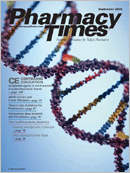Publication
Article
Pharmacy Times
The "Best Practice" Is a Four-pronged Error Analysis
Author(s):
In this column, we often point out system breakdowns that have caused error and improvements to the system that are needed to prevent error. In order for medication-error reduction efforts to be successful, however, the system improvements must be identified through a 4-pronged analysis of errors. The first 2 prongs are reactive in nature, and include (1) an analysis of errors at your practice site that have caused some degree of patient harm, and (2) an analysis of your aggregate medication-error data. The other 2 prongs, of equal importance, are both proactive in nature and include (3) an analysis of "near misses" (errors that have the potential to reach the patient or cause patient harm) and (4) an analysis of errors that have occurred in other organizations.
Each prong contains valuable information about weaknesses in the medication- use system, which can collectively lead to effective error-reduction strategies. Yet, many organizations focus heavily on the first 2 prongs. The proactive efforts found in the last 2 prongs are often not given high priority. As a result, organizations may be busy "putting out fires" rather than preventing them.
A near miss should be clear evidence that a tragic event could occur. Too often, however, this wake-up call is barely heard, much less reported. Little attention is focused on thorough analysis of errors that, fortunately, do not reach the patient or cause actual patient harm. This is especially true for organizations that identify errors based on actual patient harm. For example, a potentially serious overdose detected during patient counseling may not be given the same priority and analysis as a similar error that actually reached and/or harmed the patient. Even worse, some organizations fail to use errors that have occurred outside their organization as a road map for improvement. A great deal of knowledge and understanding can come from reviewing the experiences of others.
In order to seek and use outside knowledge about medication-error prevention, institutions should develop a small committee to follow and routinely search both professional literature and news media for descriptions of medication errors (or potentially hazardous situations) that have occurred in other institutions. Then the errors should be examined, and any recommendations made for prevention should be considered. The information should be brought to other internal committees so that error-prevention strategies can be implemented?a proactive rather than a reactive approach.
Sadly, even recommendations for system- based improvements that have been made by those who were involved in a devastating error go unheeded by others. Some may read with interest about errors that have occurred in other organizations, but they do not use the information to make proactive changes because they truly do not believe that the same errors could happen at their practice site. Using external errors to prompt examination into your own organizational systems can be beneficial because it creates a clearer understanding of the system-based causes of errors, leads to the formulation of proactive error-reduction strategies, and promotes a sharing and nonpunitive environment. Subsequently, staff can more easily identify possible system- based causes of error, assess the likelihood of a similar error at their site, and offer suggestions for improvement. They will be more comfortable discussing a serious external error than one that has occurred at their site, and, since blame is not an issue, defensive posturing and other obstacles to effective discussion will not be present. As system improvements are made, enthusiasm builds for identifying, reporting, and analyzing errors that are actually occurring within the organization. In the end, discussion about external errors should lead to more effective analysis of internal errors.
Dr. Gaunt is a medication safety analyst and the editor of ISMP Medication Safety Alert! Community/Ambulatory Care Edition.
Subscribe to Newsletter
Pharmacy Times and the Institute for Safe Medication Practices (ISMP) would like to make community pharmacy practitioners aware of a publication that is available.
The ISMP Medication Safety Alert! Community/ Ambulatory Care Edition is a monthly compilation of medication-related incidents, error-prevention recommendations, news, and editorial content designed to inform and alert community pharmacy practitioners to potentially hazardous situations that may affect patient safety. Individual subscription prices are $45 per year for 12 monthly issues. Discounts are available for organizations with multiple pharmacy sites. This newsletter is delivered electronically. For more information, contact ISMP at 215-947-7797, or send an e-mail message to community@ismp.org.







